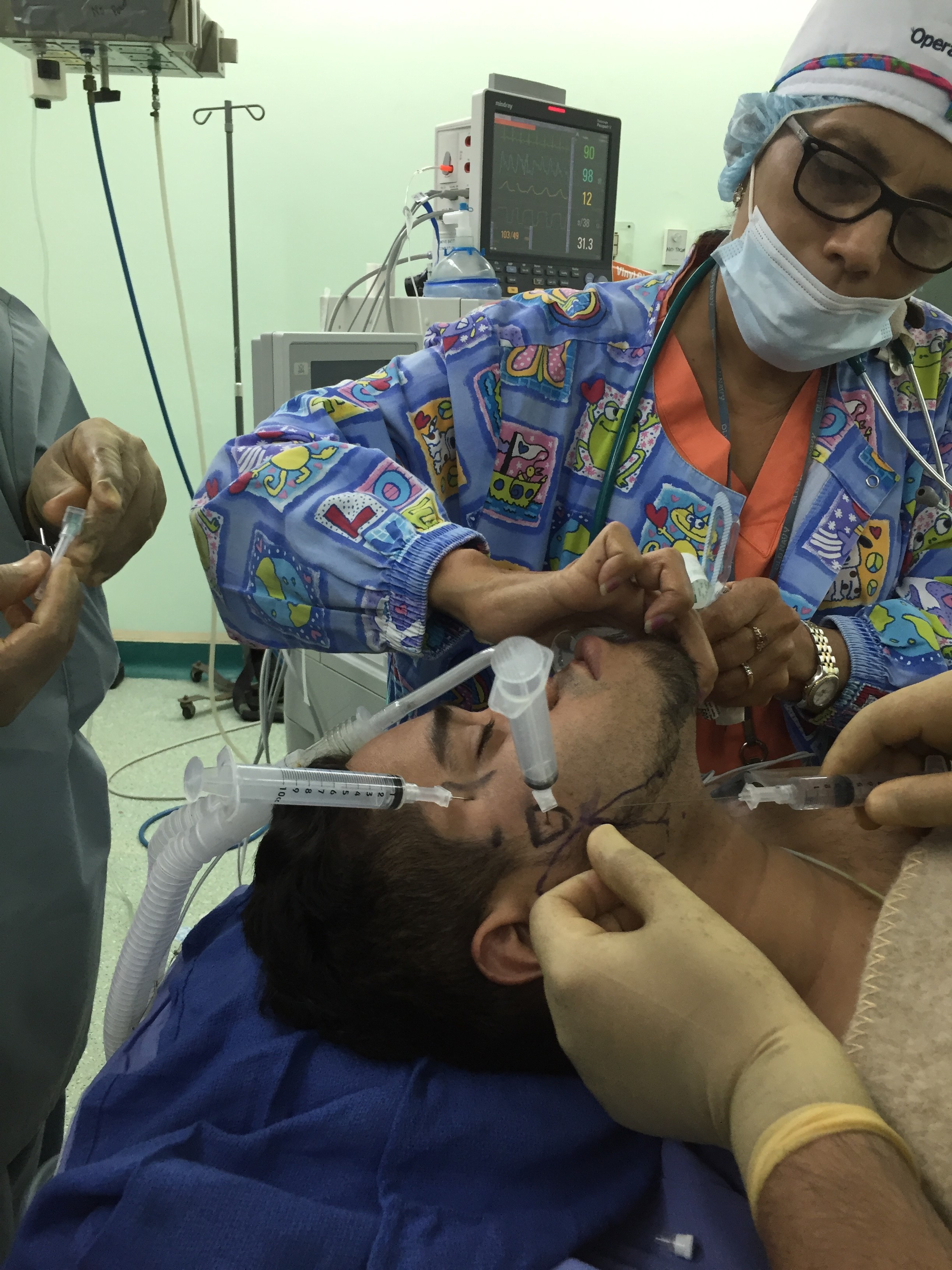NM-285
Proximal and Distal Extra-Oral Trigeminal Nerve Blocks in Advanced Craniofacial Reconstruction in Resource-Poor Environments
Gelineau A, Merritt G, Ciarallo C, Ing R
Children's Hospital Colorado, Aurora, CO, USA
Introduction: Postoperative analgesia in patients undergoing craniofacial surgery is limited by the potential for apnea and airway obstruction. A study of cleft patients reported that 97% required high dose opioids, which can contribute to airway complications.1 These risks are important in facilities with limited resources.
While trigeminal nerve blocks were historically performed proximally, concerns over complications have led to blockade at more distal/superficial sites. We postulated that blockade of the trigeminal nerves both proximally and distally would increase the likelihood of successful analgesia.
Case: An 18 year old male status post cleft lip and palate repair as a child with orthognathia and limited jaw opening was scheduled for LeFort maxillary osteotomy, mandibular sagittal split osteotomy and mental genioplasty on a medical mission in Nicaragua. After informed consent was obtained, the patient underwent uneventful induction of general anesthesia and nasotracheal intubation. Bilateral suprazygomatic maxillary nerve, infrazygomatic intercondylar mandibular nerve, and submandibular inferior alveolar nerve blocks were performed. The patient received 300 mcg of fentanyl prior to incision and no additional opioids. He was extubated at the end of the case and taken to the PACU, where he denied pain. Postoperatively he received acetaminophen. He had no respiratory complications.
Discussion: This case demonstrates the successful application of extraoral proximal and distal mandibular and maxillary blocks during a complex craniofacial reconstruction in a facility with limited resources. The use of proximal and distal nerve blocks of the upper extremity has been reported to improve onset and success.2 Nerve blocks of both proximal and distal locations along the trigeminal nerve may be beneficial for several reasons. First, failure rates of mandibular nerve blocks is as high as 15-20%.3 Second, since regional anesthesia is typically performed under general anesthesia in pediatrics, feedback is absent until after emergence. Third, given the risk of respiratory complications, the need for reliable postoperative analgesia is paramount.
Conclusions: Trigeminal nerve blocks can be used to provide postoperative analgesia following orthognathic surgery in pediatric patients. Double blockade of the mandibular nerve (i.e. proximal and distal) likely increases the probability of successful analgesia. Prospective evaluation of single vs. double blockade should be considered to quantify block success, duration, density or complications for bilaterally performed blocks in the future.
References:
Doyle, E, Hudson, I Anaesthesia for primary repair of cleft lip and cleft palate: A review of 244 procedures. Paediatr Anaesth. (1992). 2 139–45.
Urmey W. Combined axillary-interscalene (axis) brachial plexus block for elbow surgery [abstract]. Reg Anesth 1993;18:88.
Malamed SF. Handbook of Local Anesthesia. 5th Ed. St. Louis: Elsevier Mosby; 2004.
Top












